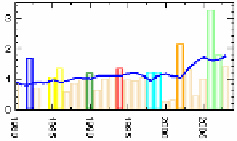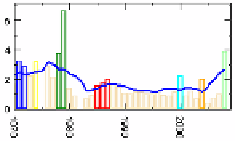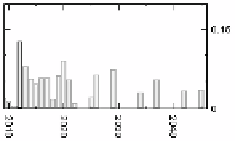Information Technology Reference
In-Depth Information
person names and their related statistics. This kind of knowledge can have not only
educational or entertaining purpose but can be used as an input to higher-level mining
or reasoning processes.
In general, one of the prime objectives of the historical knowledge is to understand
its connection to the present, find the ways to explain the present and support future
prediction, for example, through discovering significant trends or analyzing periodical
events. Figure 2 shows an example of successful detection of periodical events in the
past from Google News Archive based on finding bursts in hitcount values using the
query model depicted in Figure 1. It shows also the forecasting of the next event
occurrences on the basis of the calculated periodicity [7].
Overall, by mining web or news content that appeared in the past one could re-
construct the collective image of the past, present and future that authors had in mind
at that time. The changes in collective society images are particularly interesting to be
studied. For example, one could analyze how the particular future predictions
appeared, evolved or disappeared over time.
Likelihood
Article
frequency
World Cup
Llik elihood
Article
frequency
Presidential
election
Fig. 2.
Detection of periodical events for queries “world cup” and “presidential election” from a
news archive and forecasting of their expected occurrences (indicated as the highest bars in the
right-hand side charts) [7]
3 Historical Studies using Digital Archives
Digital archives offer possibility for individual users to quickly and easily obtain
knowledge without the necessity of manually checking multiple historical resources.
Using archives is thus possible not only to support historians in their work but enable
history writing for average users.
Historical knowledge can be crudely divided from epistemological viewpoint into
knowledge on “what happened” and “how happened”. Naturally for the latter we need
methods capable of high level reasoning, associating and so on, which may be still
difficult to be realized with the state-of-the-art technologies. However, the second
knowledge type can be already realized to successful degree by detecting events
through automatic clustering or other approaches. By manipulating queries to be
executed on historical collections one can also write thematic or contextualized




